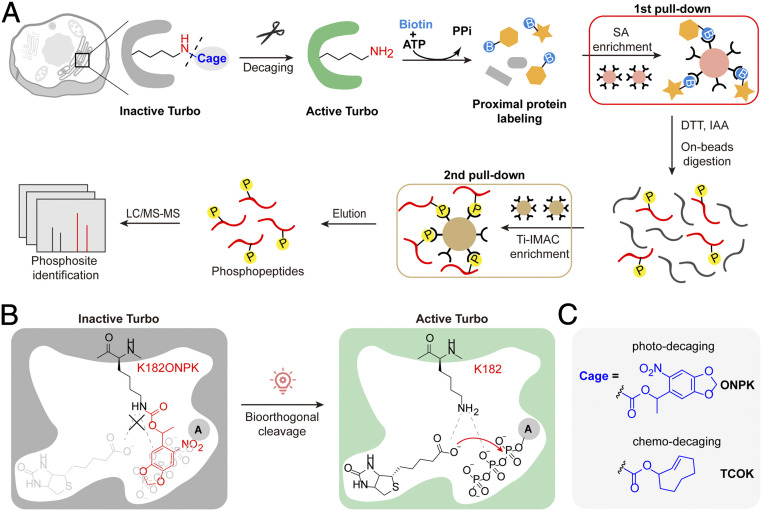Fig. 1.
Schematic illustration of SubMAPP. (A) Subcellular targeting of bioorthogonally activatable PL enzymes, photoTurbo and chemoTurbo variants, are created by genetically replacing the catalytic lysine residue with photo-/chemo-caged lysine analogs. Temporal-gated PL enzyme activation and subcellular proteomic labeling can be achieved by in situ decaging. Biotinylated proteins subsequently undergo an orthogonal pull-down pipeline to yield digested phosphopeptides, which were subjected to quantitative MS analysis. (B) Schematic illustration of photoTurbo activation. The photo-caged lysine analog (ONPK) can be genetically and site-specifically incorporated into Turbo in place of the conserved catalytic lysine residue (K182). Upon 365 nm photolysis, photoTurbo is rapidly activated, thus triggering the enzymatic generation of biotin-AMP from biotin and ATP. (C) Chemical structures of photo-caged and chemo-caged unnatural amino acids.

